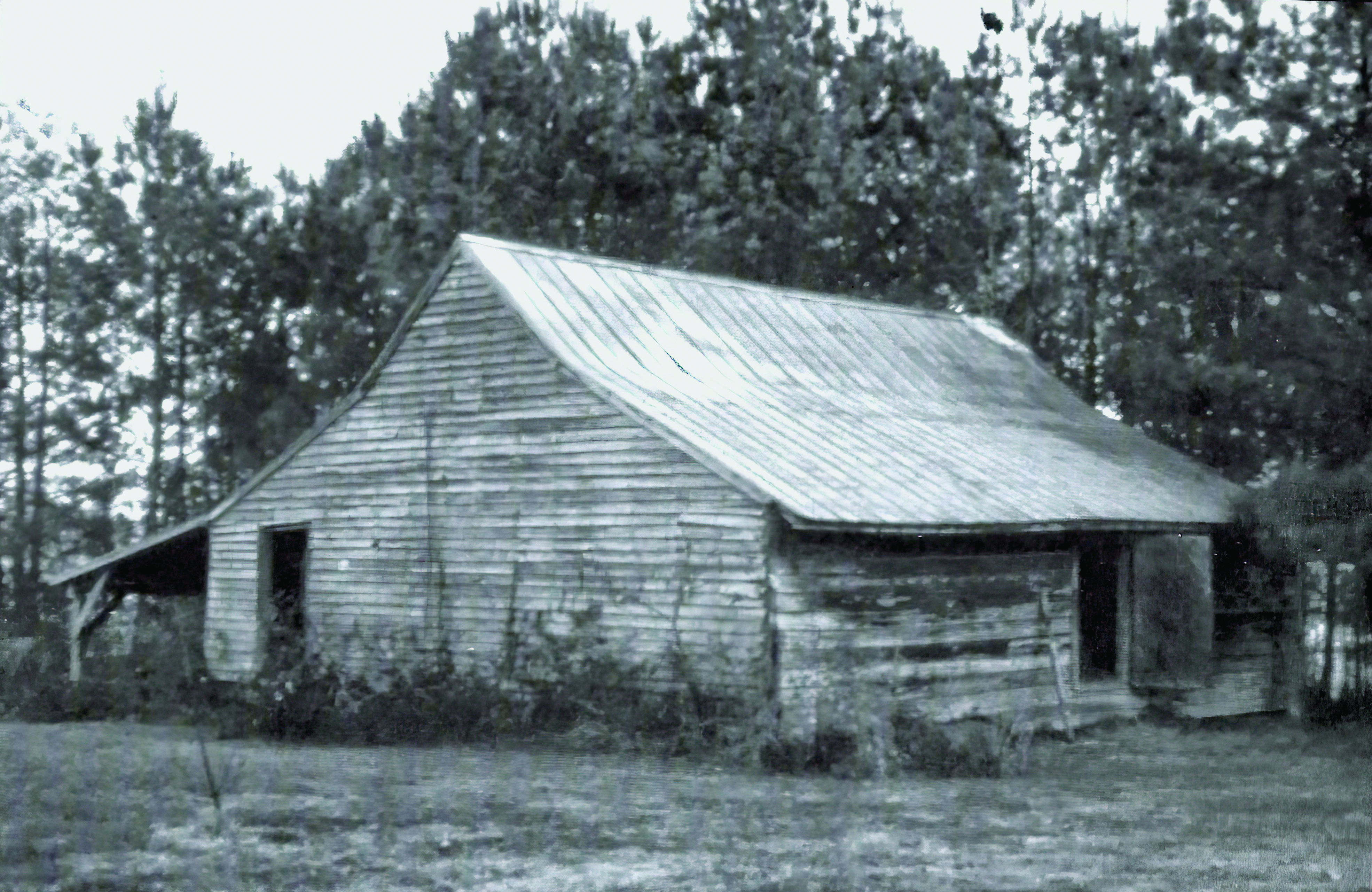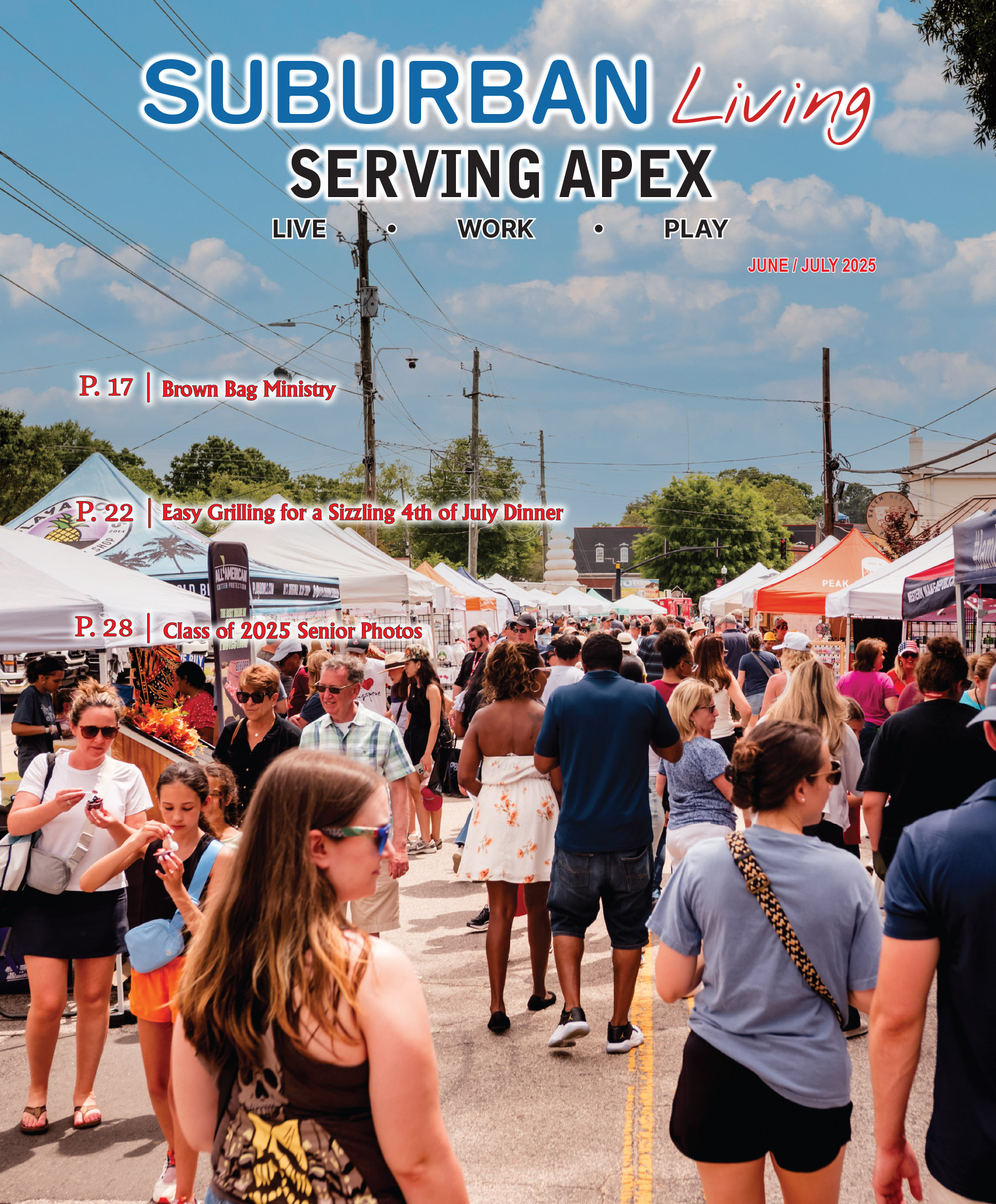As Professor Penelope J. Corfield once said, “Why on earth does it matter what happened long ago?” The simple answer: history is inescapable.
In Apex, like so many other southern towns and villages, history is hiding in plain sight. The roads we travel and the myriad structures we pass on our way to work, to worship, to shop, to play or to escape all have stories to tell. If we look, and especially if we listen, these stories reveal as much about the local history as they do about ourselves.
Once such piece of compelling Apex history includes a mile-long stretch of New Hill-Olive Chapel Road (SR 1141) that was, for a time, a local destination where having fun was the goal but debauchery was the more likely outcome. This stretch of road would be transformed into a makeshift racetrack on the weekend, running from what is today Highway 64 to the New Ruin Tavern, its decaying but discernible building still visible from the street.
I spoke to Dr. Frances Goodwin Holt who is a native of Apex (she and her husband, Milton, live in both Williamsburg, VA, and Apex) and who is actively involved in researching this piece of Apex history. She was raised off of Tody-Goodwin Road and her North Carolina Bicentennial farm has been in the family for 234 years and is listed in part on the National Register of Historic Places.
She and her husband have ancestral roots that go back to the American Revolutionary War.
Holt’s fourth great-grandfather, William, bought property near where the New Ruin Tavern was built. And in the 1860s, the granddaughter of James Goodwin (the son of William) married John Upchurch which resulted in them owning that property.
Holt led off by telling me that in Colonial America, taverns/inns and racetracks were commonplace. Taverns were part of the local fabric of many communities as they were a place to gather, a social outlet, a center of commerce and a place to escape the hard life of the farm. So, it’s not surprising to learn that from around the late 1700s into the 1800s, at what Holt called the “ridge between Chatham and Wake Counties,” there was a racetrack and a tavern.
You can’t really talk about the racetrack and tavern in this area without talking about the Baptist church that sits, to this day, nearby. Holt pointed to a book, “Biography of a Country Church” by Dr. Garland Hendricks, in which he traced the history of Olive Chapel Baptist Church. Hendricks showed that, in part, the racetrack and the New Ruin Tavern served as a kind of impetus for the establishment of the church. The unwelcome debauchery that went on in this area included distilling and drinking liquor, and gambling (i.e., activities related to horse racing, cockfighting, wrestling, gander pulling and other unsavory activities).
Holt noted that the best available information suggests that liquor was available legally at the tavern from about 1844 to the 1880s with records indicating that tavern operator Willie Henderson was granted a license to pour drinks at the New Ruin Tavern. She also pointed to a newspaper article in 1844 that announced a scheduled cockfight to be fought in that vicinity.
One of the great joys of learning about local history is the discovery of local mythology. And we are fortunate that such mythology exists at the New Ruin Tavern. You see, its front door is known as the Door of a Thousand Nails. When I visited the remnants of the tavern, I saw the door, still intact all these years later with what appear to be thousands of embedded nails.
Holt said that research continues on the actual reason why the door has nails at regularly spaced intervals in the interior side of the door with the ends bent over on the exterior side. The door with its nails may have been of significance to the tavern’s operation or perhaps construction of the time called for this approach. A more dramatic and fanciful reason for this display of hardware suggested that any game-day victory, whether gander pulling, wrestling, cockfighting or horse racing, afforded the victor a hammer and a nail. If you were on the right side of victory, your reward was the hammering of a nail into that door and a place in New Ruin Tavern history. The search for the truth continues while the Door of a Thousand Nails stands strong.
Holt shared that it’s speculated that the Civil War and the growing temperance movement may have been factors in reducing the availability of alcohol in the areas. Undoubtedly though, the church had the largest influence on members who liked to imbibe, probably creating a reduced demand for liquor.
As noted earlier, Holt’s relatives, John Upchurch and his wife Emiline Cotton Upchurch, lived on the property in the late 1800s. Records suggest that Upchurch probably put an end to liquor sales at the tavern when he converted it to a general store for the community.
Additionally and perhaps most poetically, their son, William Fulton Upchurch, became a leading member of the Olive Chapel Baptist Church.
Yet even after the tavern closed its doors, members of the church community continued to struggle with the issue of alcohol. Over time, members’ tolerance evolved and for many, they no longer had a problem with those who took a drink but could not abide by members who became drunk. Some things never change.
It is not yet clear if the activities in the area associated with gambling followed a parallel path with the New Ruin Tavern demise. The church’s influence on quelling the unwanted activities associated with the racetrack and tavern was great as pressure mounted to transition this mile or so stretch of road from chaos to community. And that is, in the end, what happened.
So, why does Frances Holt (or anyone, for that matter) investigate history? Because it’s intriguing, compelling and fascinating. Because it teaches us about the human condition and touches us with stories of hardship, perseverance, and growth. And because it’s all around us.








